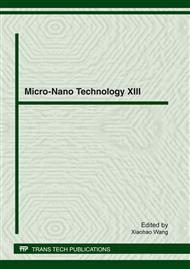p.318
p.324
p.329
p.334
p.341
p.348
p.354
p.359
p.369
The Microfluid-Driven Control by Forced Wave
Abstract:
The commutation of pressure, electro-osmosis and acoustic methods is usually adopted to realize the drive of microfluid in microsystem. However, the above methods do not have a very ideal controllability. In view of the above situation, the paper proposes a kind of microfluid-driven method according to physical mechanism of wave-vortex interaction. In the method the microfluid-driven control is realized sympathetic vibration between forced wave and unstable wave in the vortex layer to intensify or destroy nonlinear stability of vortex or to regulate quasi-vortex energy flow in the boundary layer, in which the forced wave is produced by applying tangential simple harmonic motion with specific frequency and amplitude to the outside of flowing passage or flowing body. The paper demonstrates the method theoretically, and then uses an experiment to prove its availability. By using de-ionized water, straight round glass with the diameter of Φ18~Φ20μm, the experiment of separation is carried out successfully. The method has very broad applying prospect for the activity retention in the process of cell injection and transfer in the biomedical field and the fuel transfer in the micro propeller.
Info:
Periodical:
Pages:
341-347
Citation:
Online since:
February 2012
Authors:
Keywords:
Price:
Сopyright:
© 2012 Trans Tech Publications Ltd. All Rights Reserved
Share:
Citation:


